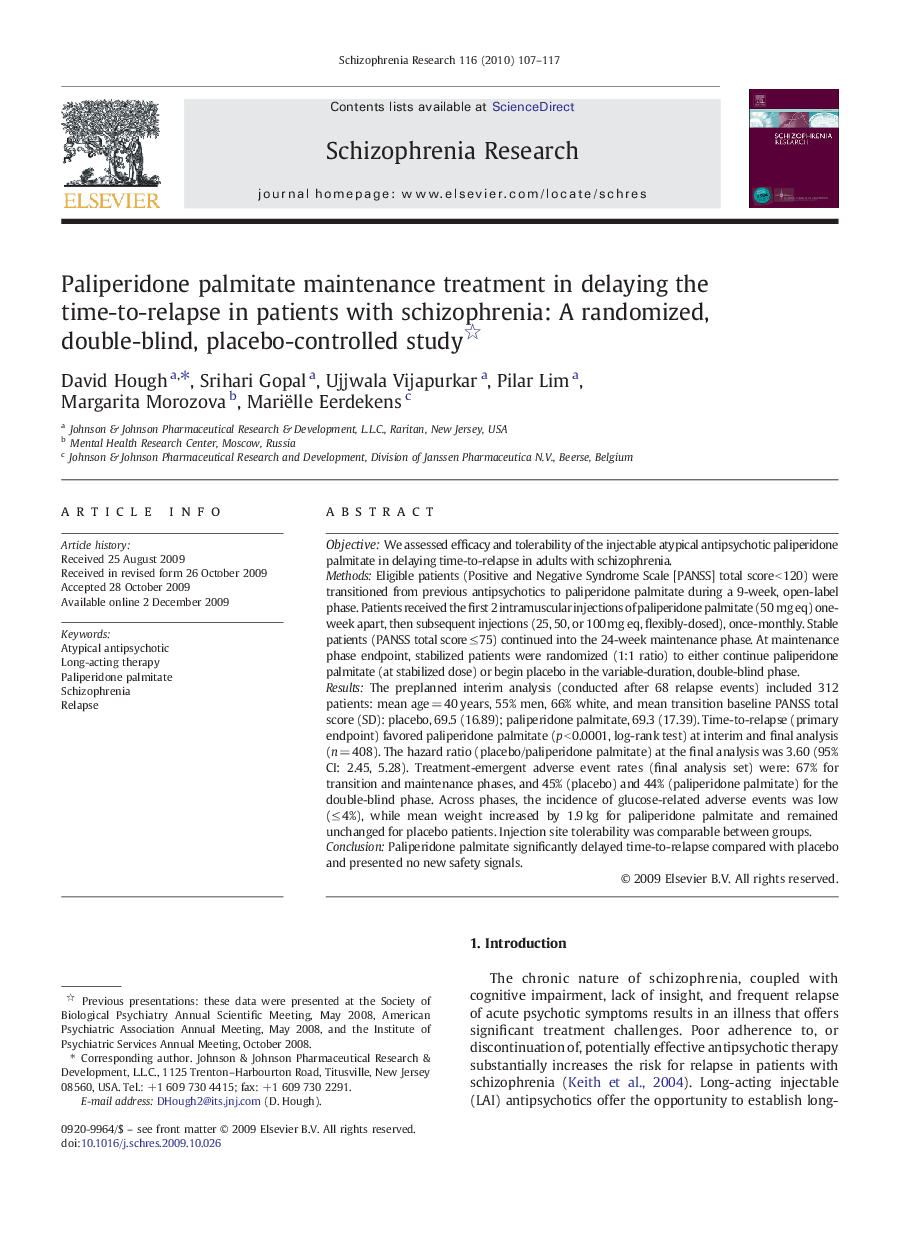| Article ID | Journal | Published Year | Pages | File Type |
|---|---|---|---|---|
| 341398 | Schizophrenia Research | 2010 | 11 Pages |
ObjectiveWe assessed efficacy and tolerability of the injectable atypical antipsychotic paliperidone palmitate in delaying time-to-relapse in adults with schizophrenia.MethodsEligible patients (Positive and Negative Syndrome Scale [PANSS] total score < 120) were transitioned from previous antipsychotics to paliperidone palmitate during a 9-week, open-label phase. Patients received the first 2 intramuscular injections of paliperidone palmitate (50 mg eq) one-week apart, then subsequent injections (25, 50, or 100 mg eq, flexibly-dosed), once-monthly. Stable patients (PANSS total score ≤ 75) continued into the 24-week maintenance phase. At maintenance phase endpoint, stabilized patients were randomized (1:1 ratio) to either continue paliperidone palmitate (at stabilized dose) or begin placebo in the variable-duration, double-blind phase.ResultsThe preplanned interim analysis (conducted after 68 relapse events) included 312 patients: mean age = 40 years, 55% men, 66% white, and mean transition baseline PANSS total score (SD): placebo, 69.5 (16.89); paliperidone palmitate, 69.3 (17.39). Time-to-relapse (primary endpoint) favored paliperidone palmitate (p < 0.0001, log-rank test) at interim and final analysis (n = 408). The hazard ratio (placebo/paliperidone palmitate) at the final analysis was 3.60 (95% CI: 2.45, 5.28). Treatment-emergent adverse event rates (final analysis set) were: 67% for transition and maintenance phases, and 45% (placebo) and 44% (paliperidone palmitate) for the double-blind phase. Across phases, the incidence of glucose-related adverse events was low (≤ 4%), while mean weight increased by 1.9 kg for paliperidone palmitate and remained unchanged for placebo patients. Injection site tolerability was comparable between groups.ConclusionPaliperidone palmitate significantly delayed time-to-relapse compared with placebo and presented no new safety signals.
